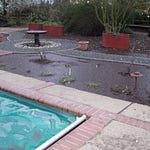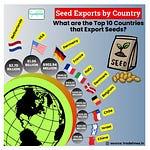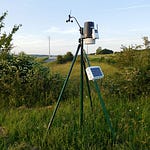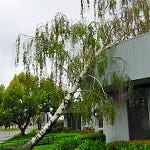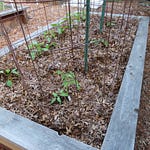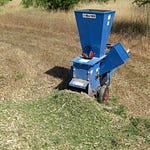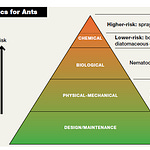Phosphorus, in the world of plant fertilizers, is considered a macronutrient, an important element used by plants. Phosphorus is used to promote root and tuber growth, as well as the production of flowers and seeds. But, do you really need to add it every time you fertilize? And why have 13 states - as well as several municipalities - placed restrictions on the use of phosphorus?
Phosphorus is the “P” in “N-P-K”, the percentage of macronutrients found listed on the front of a container of fertilizer. But how much phosphorus do your plants need for sufficient growth?
Apparently, not as much as Calcium or Magnesium, according to this chart presented as evidence by the University of Wisconsin. Should phosphorus be getting as much credit as Nitrogen or Potassium, every time you look at a bag of fertilizer? Garden author Robert Kourik (“Sustainable Food Gardens”) points out that not only is Phosphorus over applied by gardeners, it may not be organic, and it is certainly detrimental to the health of aquatic life when it is allowed to runoff into local streams. And speaking of detrimental, in today’s newsletter podcast (above), Kourik talks about the time he took a bag of phosphorus fertilizer to the local radiation analyst. Things started clicking! He has video, too:
According to the Chicago Botanic Garden, when too much phosphorus is applied or is applied at the wrong time—such as right before it rains—most of it is washed away and ends up in the local waterways. This type of pollution is called nonpoint source pollution. It causes eutrophication (a reduction of dissolved oxygen in water bodies caused by an increase of minerals and organic nutrients) of rivers and lakes. This reduced level of oxygen in water ends up suffocating fish. Several municipalities have banned the use of phosphorus-containing fertilizers for turf or lawn areas. These laws are designed to protect local water quality in lakes, streams, and ponds. According to several experts, in most cases, phosphorus is not needed to maintain a healthy lawn. Retailers near towns that have enacted a ban are required to alert customers about the prohibition of phosphorus in fertilizers for lawn and turf by posting a sign where fertilizers are sold.
At least 11 states ban phosphorus fertilizer use or sale: Illinois, Maine, Maryland, Michigan, Minnesota, New Jersey, New York, Vermont, Virginia, Washington, and Wisconsin.
More are joining that group, including Pennsylvania and Florida, as well as several cities and counties, especially those that border large bodies of water. But it isn’t just lawns. Phosphorus, as well as nitrogen, are facing restrictions in all fertilizers offered for sale there.
Consider these controversial restrictions that are in Brevard County Florida:
“Spring is a popular time to fertilize the lawn, but did you know there are wrong ways to fertilize plants? Are you aware that a fertilizer ban goes into effect on June 1?
Follow these fertilizer ordinances throughout Brevard County which state:
No nitrogen or phosphorus can be applied to any plants between June 1 and Sept. 30.
When applying a fertilizer with nitrogen, it must contain a minimum of 50% slow-release nitrogen and must be applied at a maximum rate of 1 pound of nitrogen per 1,000 square feet per application.
Phosphorus can only be applied if a soil test indicates it is needed.
When applying phosphorus, a maximum of .25 pounds per 1,000 square feet can be applied at one time, with a maximum of .5 pounds per 1,000 square feet applied yearly.
Do not fertilize if heavy rain is forecast.
A 10-foot fertilizer-free zone next to water bodies must be maintained in Cape Canaveral, Cocoa, Indian Harbor Beach, Malabar, Palm Bay and Satellite Beach. Residents living in unincorporated Brevard County, Melbourne, and Melbourne Beach must maintain a 15-foot fertilizer-free zone along water bodies. The City of Rockledge has a fertilizer-free zone east of Rockledge Drive. All other municipalities not mentioned have a 25-foot fertilizer-free zone along the IRL, Banana River and any other water body.
Keep fertilizer and grass clippings on the lawn and off sidewalks, driveways, roads and out of storm drains and water bodies.”
Is Phosphorus Radioactive?
According to the EPA, The United States mines and consumes about 23 million tons of phosphate rock per year, most of it (95%) for wet-process phosphoric acid or super phosphoric acid intended for fertilizers, with the balance used to produce phosphorus compounds for industrial applications, primarily glyphosate herbicide.
The most important use of phosphate rock is in the production of phosphate fertilizers. Due to its chemical properties, phosphate rock may contain significant quantities of naturally occurring radioactive materials (NORM):
Uranium concentrations in phosphate ores found in the U.S. range from 20 - 300 parts per million (ppm). Thorium occurs at essentially background levels, between 1 - 5 ppm.
Before phosphate ore is turned into fertilizer or other products, it is transformed into either phosphoric acid (through a wet process), or elemental phosphorus (through a thermal process). This processing concentrates NORM in the waste products, transforming them into Technologically Enhanced Naturally Occurring Radioactive Materials (TENORM).
Bottom Line: Get a Soil Test Done Before Applying Any Fertilizers

Why waste your money and possibly degrade the environment if you don’t need certain soil nutrients? Home test kits are available widely for testing N-P-K content of soils. For a more complete soil test, check with your local county Ag agency or Cooperative Extension Office and see if they offer testing at a reasonable price. At least three Universities do offer soil testing services for home gardeners, including:
University of Massachusetts/Amherst, Texas A&M, and Colorado State.
Kourik also recommends Harmony Farm Supply in Sonoma County, CA for soil testing services.
All of Robert Kourik’s garden-related publications can be found at his website, RobertKourik.com
“It’s the Best Garden Event in Northern California!” (I said that)
Harvest Day at the Fair Oaks Horticulture Center
Saturday, August 5, 8am-2pm. Free!
Debbie Flower and I will be talking about “Garden Tips to Save Time, Money and Water” at Harvest Day at 830 am. The Fair Oaks Horticulture Center is located at 11549 Fair Oaks Blvd, in Fair Oaks Park, Sacramento County, California. Hope to see you there! More details here. Presented by the U.C. Master Gardeners of Sacramento County.
Thank you for also listening to the Garden Basics with Farmer Fred podcast! It’s available wherever you get your podcasts. Please share it with your garden friends.
Fred Hoffman is also a University of California Cooperative Extension Master Gardener in Sacramento County.
And he likes to ride his bike.










